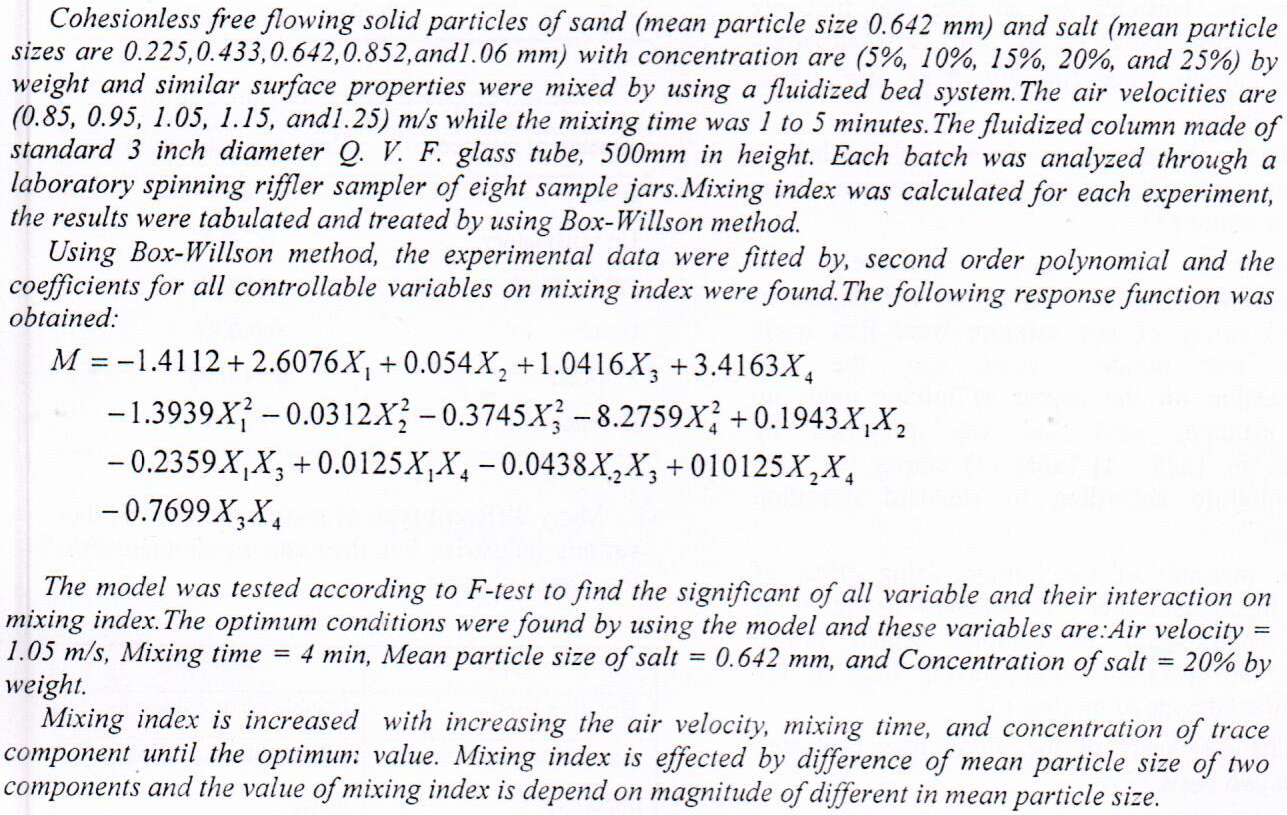
 (1)
(1)
The free Schiff base ligand (HL1) is prepared by being mixed with the co-ligand 1, 10-phenanthroline (L2). The product then is reacted with metal ions: (Cr+3, Fe+3, Co+2, Ni+2, Cu+2 and Cd+2) to get new metal ion complexes. The ligand is prepared and its metal ion complexes are characterized by physic-chemical spectroscopic techniques such as: FT-IR, UV-Vis, spectra, mass spectrometer, molar conductivity, magnetic moment, metal content, chloride content and microanalysis (C.H.N) techniques. The results show the formation of the free Schiff base ligand (HL1). The fragments of the prepared free Schiff base ligand are identified by the mass spectrometer technique. All the analysis of ligand and its metal complexes are in good agreement with th
... Show More (4)
(4)
 (11)
(11)
 (54)
(54)
 (50)
(50)
 (17)
(17)
 (17)
(17)
Temporomandibular Disorders (TMD) refer to a group of symptoms where pain is the most leading cause to demand a treatment by the patient. Light therapies are of great importance at current times due to its biosafety and non-invasive quality when used for the management of TMD symptoms. This study aimed to evaluate the efficacy of red LED light with low-level LASER in treating TMD patients.
A double-blind randomized clinical study was conducted and included 60 patients along 3 groups (20 for e
 (7)
(7)
 (7)
(7)
Thin films Tin sulfide SnS pure and doped with different ratios of Cu (X=0, 0.01, 0.03 and 0.05) were prepared using thermal evaporation with a vacuum of 4*10-6mbar on two types of substrates n-type Si and glass with (500) nm thickness for solar cell application. X-ray diffraction and AFM analysis were carried out to explain the influence of Cu ratio dopant on structural and morphological properties respectively. SnS phase appeared forming orthorhombic structure with preferred orientation (111), increase the crystallinity degree and surface roughness with increase Cu ratio. UV/Visible measurement revealed the decrease in energy gap from 1.9eV for pure SnS to 1.5 for SnS: Cu (0.05) making these samples suitable f
... Show More (4)
(4)
 (3)
(3)
In this study, the zinc oxide NPs have been synthesized from the fresh pomegranate peels extract using the precipitation method. The ZnO nanoparticles were produced from the reaction of fresh peels extract with zinc acetate salt which was used as zinc source in the presence of 2 M NaOH. The green synthesized nanoparticles were characterized through X-ray diffraction (XRD), UV-Vis diffuse reflection spectroscopy, Fourier transform infrared spectroscopy (FTIR), and Atomic force microscopy (AFM). The XRD patterns confirm the formation of hexagonal wurtzite phase structure for ZnO synthesized using pomegranate peels extract with average crystalline size of 28 nm. FTIR spectra identify the presence of many active functional groups for the pom
... Show More (15)
(15)
 (4)
(4)
 (4)
(4)
 (4)
(4)
